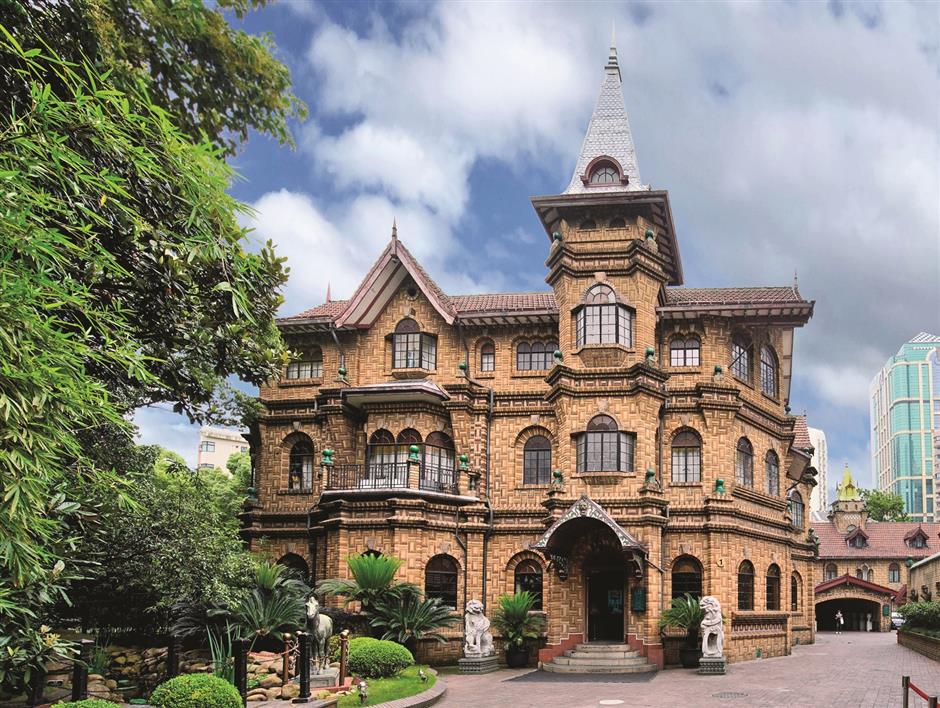今日上海
瑞典航运巨头的童话别墅保留了标志性的地位 - 2024年07月18日
Fairy-tale villa of a Swedish shipping magnate retains iconic status
In Sweden’s southernmost county of Skane, washed by the waves of the Oresund Strait linking the North and Baltic seas, lies the ancestral home of Captain Nils Moller and his family.
The saga of their bond with Shanghai traces back to 1859, when Moller, fueled by a blend of curiosity and daring, embarked on a voyage from Sweden to China, seeking fortunes unknown.
Upon his arrival, Moller carved out a formidable presence in Shanghai. He founded a shipping company, which handled everything from ship ownership and cargo transport to marine broking. It eventually became a pivotal representative for multiple multinational corporations.
Moller’s life in Shanghai spanned four decades. Starting from scratch, he rose to become a magnate of his era. In 1903, he returned to the city of Helsingborg in Skane, where he died at age 78, leaving behind a legacy of wealth and success.
That legacy was inherited by Nils’s descendants, with his son Eric Moller taking the helm in 1913. Born in Shanghai in 1875, Eric had been involved in his father’s business since he was 15. Under his leadership, the company flourished, bolstering the family’s influence and wealth.
The Mollers were not only shrewd businessmen but also possessed a flair for the arts, particularly architecture. Moller Villa in Jing’an District is a legacy to their talent.
The design of the fairytale-style house is supposedly based on a sketch drawn by Moller’s daughter from a dream she had.
It’s a masterpiece of Nordic architecture, a symphony of heights and angles that gives it a unique, whimsical character. The roof is an elaborate dance of varying elevations, with sharp, four-sided peaks and an intricate interplay of convex and concave surfaces.

Moller Villa in Jing’an District is an enduring architectural wonder now housing a luxury hotel.
The tower’s roof, with its four sloping sides, features bay windows and decorative elements that enhance both the villa’s esthetic appeal and the natural light within. Covered in specially crafted metallic blue aluminum tiles arranged like scales, the steep, pointed roof is reminiscent of the harsh Nordic winters, designed to deflect icy winds and prevent snow accumulation.
The gabled roof’s wooden beams are prominently exposed, with white plaster filling the spaces between, a hallmark of rural Nordic architecture. Inside, intricately carved wooden ceilings and wainscoting adorn the spaces, blending craftsmanship with artistry. The decor is filled with nautical motifs and designs that echo the legacy of the seafaring family, making the residence resemble a grand ocean liner more than a house.
Navigating the interior is an adventure in itself. The staircases wind and twist, leading up and down unexpectedly, creating a labyrinthine journey where rooms on the same floor can often be reached only by traversing additional stairs. These staircases, along with the floors and wall panels, are predominantly made of teak, their rich reddish-brown hues complemented by intricate carvings that exude a distinct Western flair.
In the lush garden of the villa stands a magnificent bronze statue of a horse, commemorating Blonic Hill, a cherished steed of the family.
Eric Moller once worked at the Shanghai Race Club, an institution dominated by British expatriates. It was said that he amassed considerable wealth through the racetrack. In 1936, during the grand autumn races, Blonic Hill clinched the championship, a victory celebrated with great fanfare. This triumph was followed by another championship, solidifying Blonic Hill’s legendary status.
To honor the achievements, Eric commissioned a bronze statue of the horse.
The garden, located south of the main building, is beautifully designed with colorful floral tiles and surrounded by dragon cypress and cedar trees. At its center is a lush lawn.
A charming conservatory in the garden, originally equipped with heating, features intricate carvings and ceramic tiles. This space allows for year-round enjoyment of the flowers, seamlessly blending nature and artistry.
In 1941, after the Pacific War began, the Moller family was forced into a concentration camp, and their residence became a Japanese military club. Postwar, it was used by the Kuomintang secret police.
After 1949, the villa was occupied by the Shanghai Public Security Bureau and the Shanghai Communist Youth League.
In 2001, the villa was transformed into the luxury Moller Villa Hotel, featuring 45 exquisitely styled rooms, including 16 in the original building that retain their European charm. The hotel is a frequent venue for weddings and elite gatherings.
Source: Shanghai Daily
